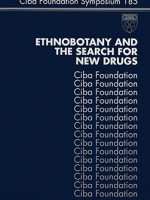Ethnobotany and the search for new drugs
- 1994 - 280 pages
- Auteurs : D.J. Chadwick, G.T. Prance, J. Marsh
- Edition : Eds John Wiley & sons
- Collection : 185, Ciba Foundation Symposium
- Langues : Anglais
- Mot-clés : Ethnobotanique, Nouveau médicament
Description :
Some of the most potent drugs in Western medicine are derived from plants, yet they are obtained form only about 90 of the estimated 250 000 species of plants.
Some of those compounds have been used for centuries, for example, digoxin and digitoxin from Digitalis purpurea; others are relatively new additions to our pharmacopoeia, such as taxol from Taxus brevifolia. The potential for further discoveries is clearly enormous and ethnobotany has recently become of renewed interest in the search for novel pharmaceuticals.
Ethnobotanical information can be used in three ways in this search : for general indications of bioactivity suitable for broad screens; for indications of specific activity suitable for particular bioassays; and for indications of activity against disorders of unknown aetiology, such as schizophrenia. The value of ethnomedical information depends on the accuracy with which the medical use of the botanical preparation has been recorded, whether or not this use can be corroborated under scientific conditions, and the expertise of the practitioner who provides the information. The book examines how ethnomedical reports perform when judged by these standards and ways to develop the discipline of ethnobotany for a more quantitative approach. The are also discussions of the important differences between disease concepts in Western and traditional medicine.
The basis of ethnobotany in the vast knowledge that is traditionally the preserve of which doctors, shamans and tribal healers.This irreplaceable knowledge is rapidity being lost through the destruction of both natural habitats and indigenous cultures. The book contains contributions on traditional medicine in China, India, Africa and Central and South America. It describes ways to encourage conservation of natural habitats and cultivation of medicinal plants to prevent exploitation of wild species. The book also considers intellectual property rights, the application of patent laws and methods of compensation for the people who provide both the plants and the knowledge of their healing properties.



